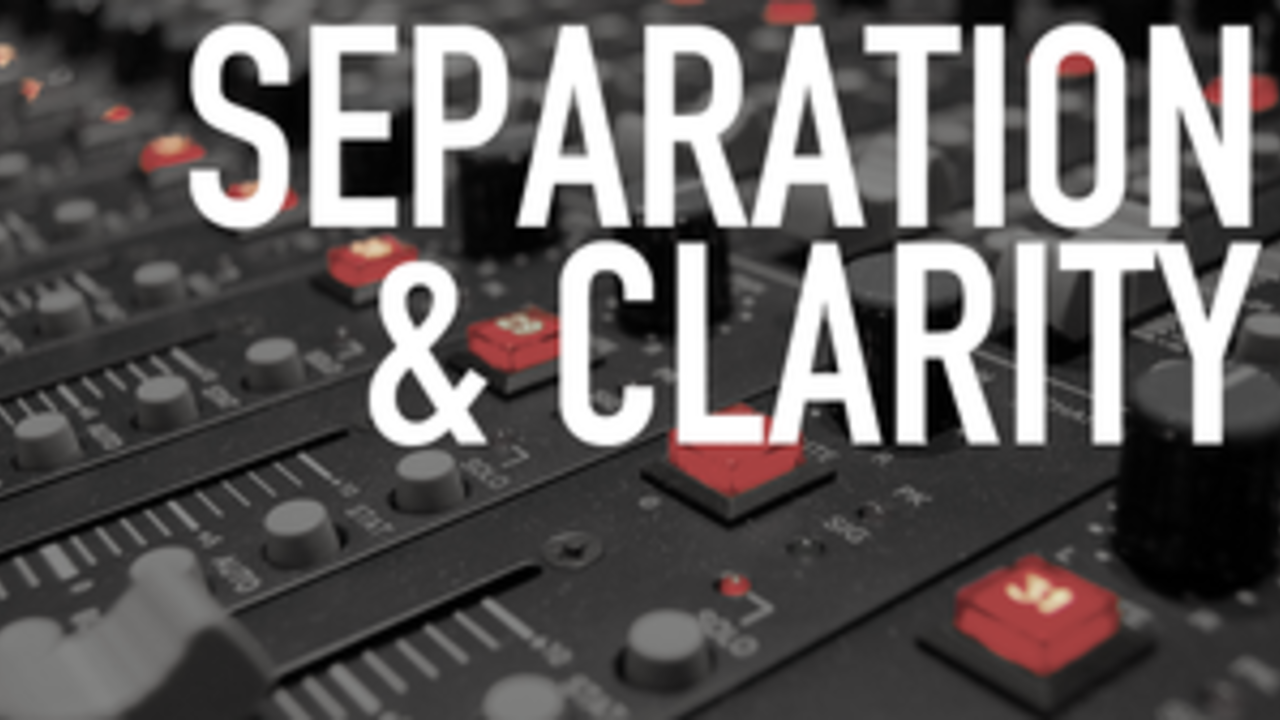How To Get Clarity And Separation In Your Mixdown

I’ve been doing mixdowns (and masters) for myself and others since 2002, and I’m often asked for mixdown tips.
One of the most popular ones is dealing with layering and separation. These two things are opposites.
When layering you are trying to glue sounds together. When working on separation, you are trying to give them space from each other.
Layering can help make parts sound more full and robust. By contrast, separation can give your mix clarity, punch, depth, and power.
When I am going for separation, I try to achieve this through EQ, Space, Pan, and Colour.
EQ separation is the most important so I do that first.
If I want two sounds separated, I’ll make sure they don’t have a lot of frequency content in the same frequency. e.g., Kick & Bass.
If the kick has a lot of 100hz, I’ll cut the bass a bit at 100hz. Some EQs like DMG Equilibrium will even let you overlay the analyzer waveform from one track onto another. So you can see the two different waves at the same time.
Next, go for color.
This is one of my favorite tips. I’ll often use a very subtle overdrive plugin on each track. Usually with a 50/50 wet dry setting too. Plugins like Slate Pre Amps, Ableton Overdrive, Fabfilter Saturn, Guitar rig (amp head, no box, subtle setting), Decapitator, Waves NLS.
A very subtle amount of overdrive like this will color each sound. If each sound has a different plugin, then they will also become separated. Through trial and error, you will also find which plugs are best for which type of sound.
After color, I’ll check out the pan.
Not every sound needs to be in the middle, and not each sounds needs to be super wide and stereo.
I like to use pan to place my sounds in the stereo field. If the sound is stereo, I use Ableton Utility, or Waves S1 to narrow the width of the sound. This can help define its pan position in space. I recommend experimenting with pan, but don’t go overboard. It will all disappear in mono anyway.
Lastly, Space.
Adding the right type of reverb/delay can help with separation too.
Using reverb or delay will move sounds away from you whereas distortion and compression will bring them closer to you. You can use these methods to give separation through depth.
You can also try tricks like panning the dry signal towards one side and the wet signal to the other. This can make sounds feel like they are outside of the speakers. Almost psychoacoustic.
Soon I’ll share some tips about layering too!
You're just one song away...
-Stu (Bass Kleph)
p.s. You can learn my in-depth tips for mixdowns in The Road To Main Stage

